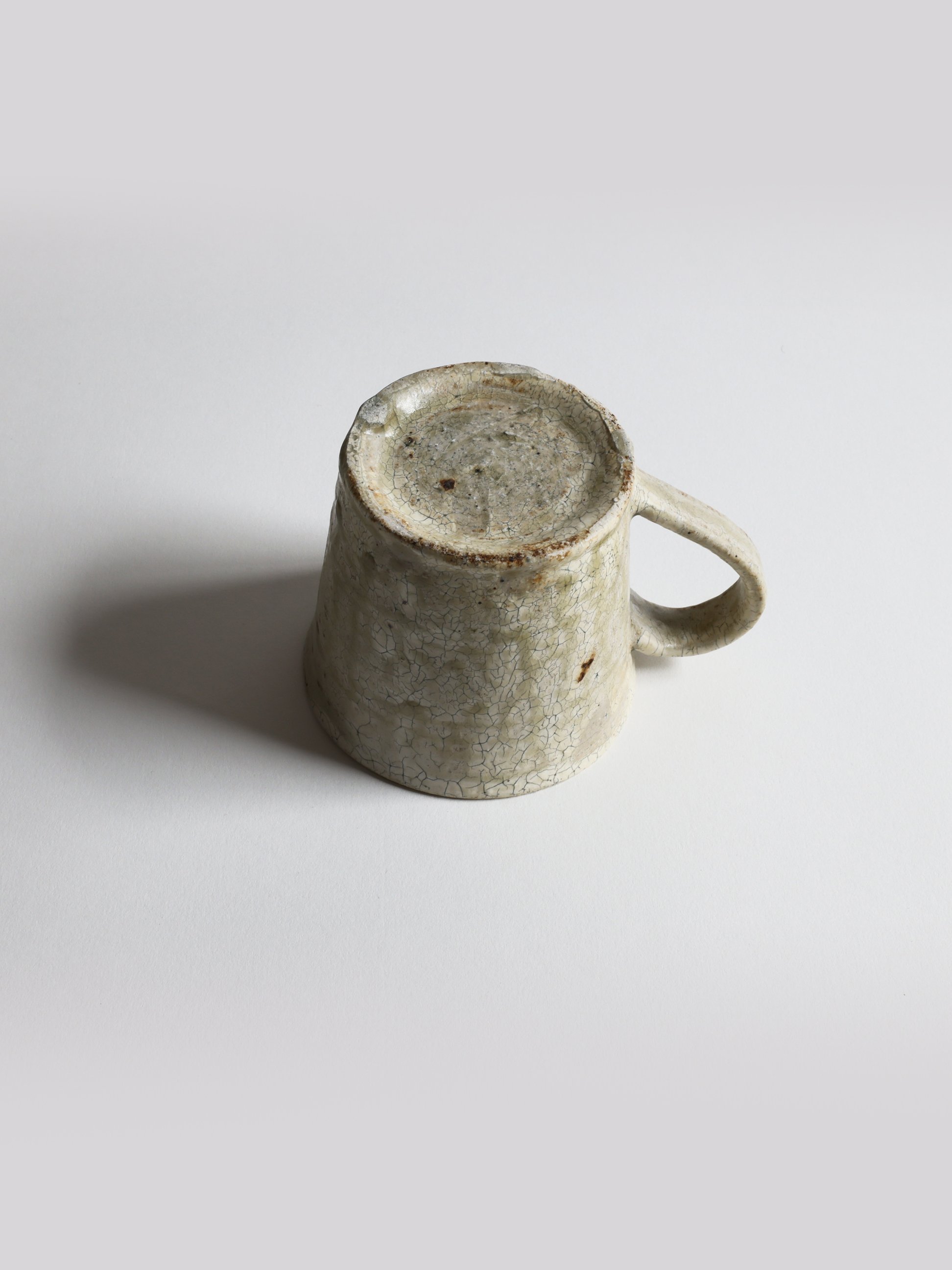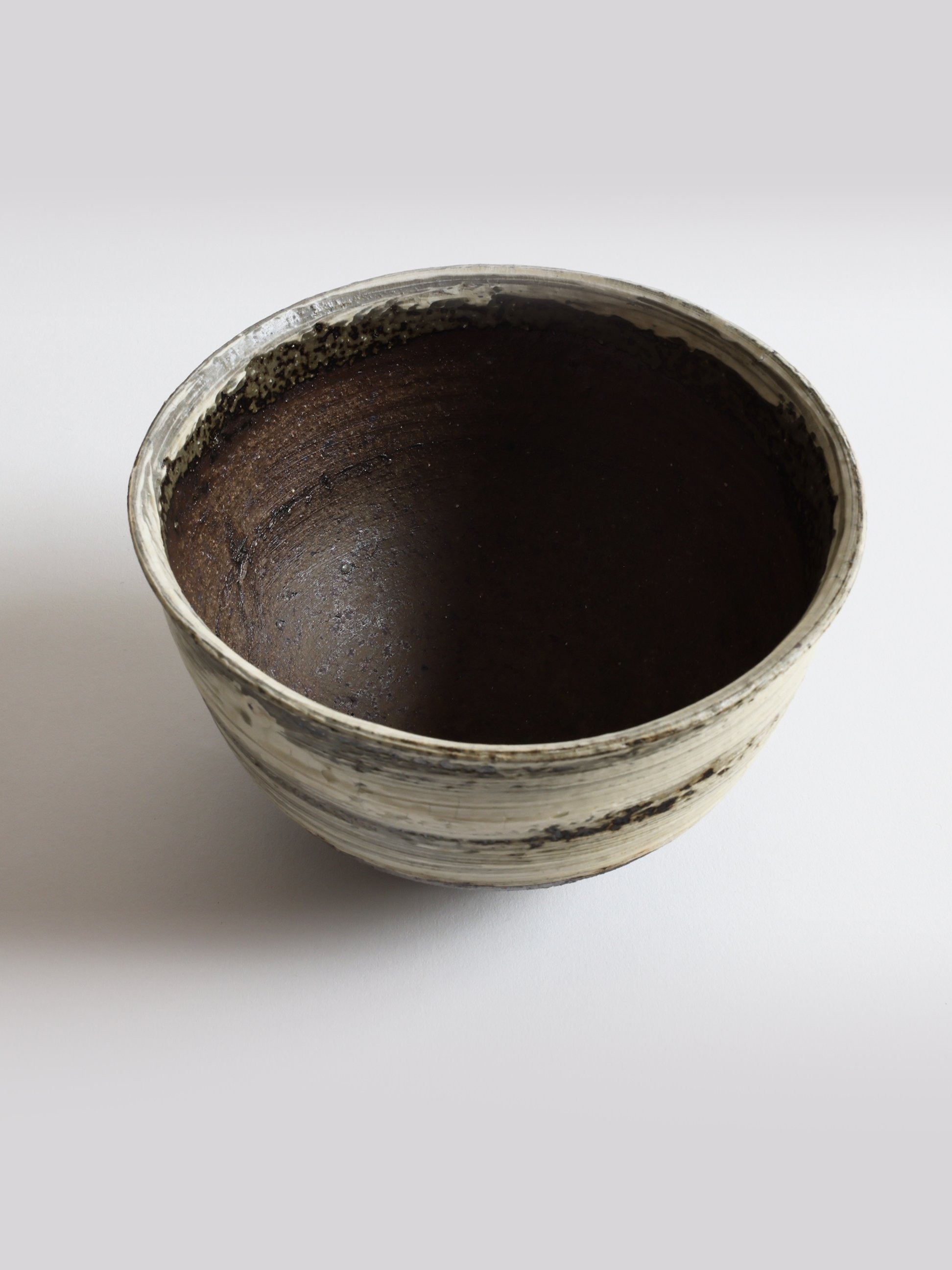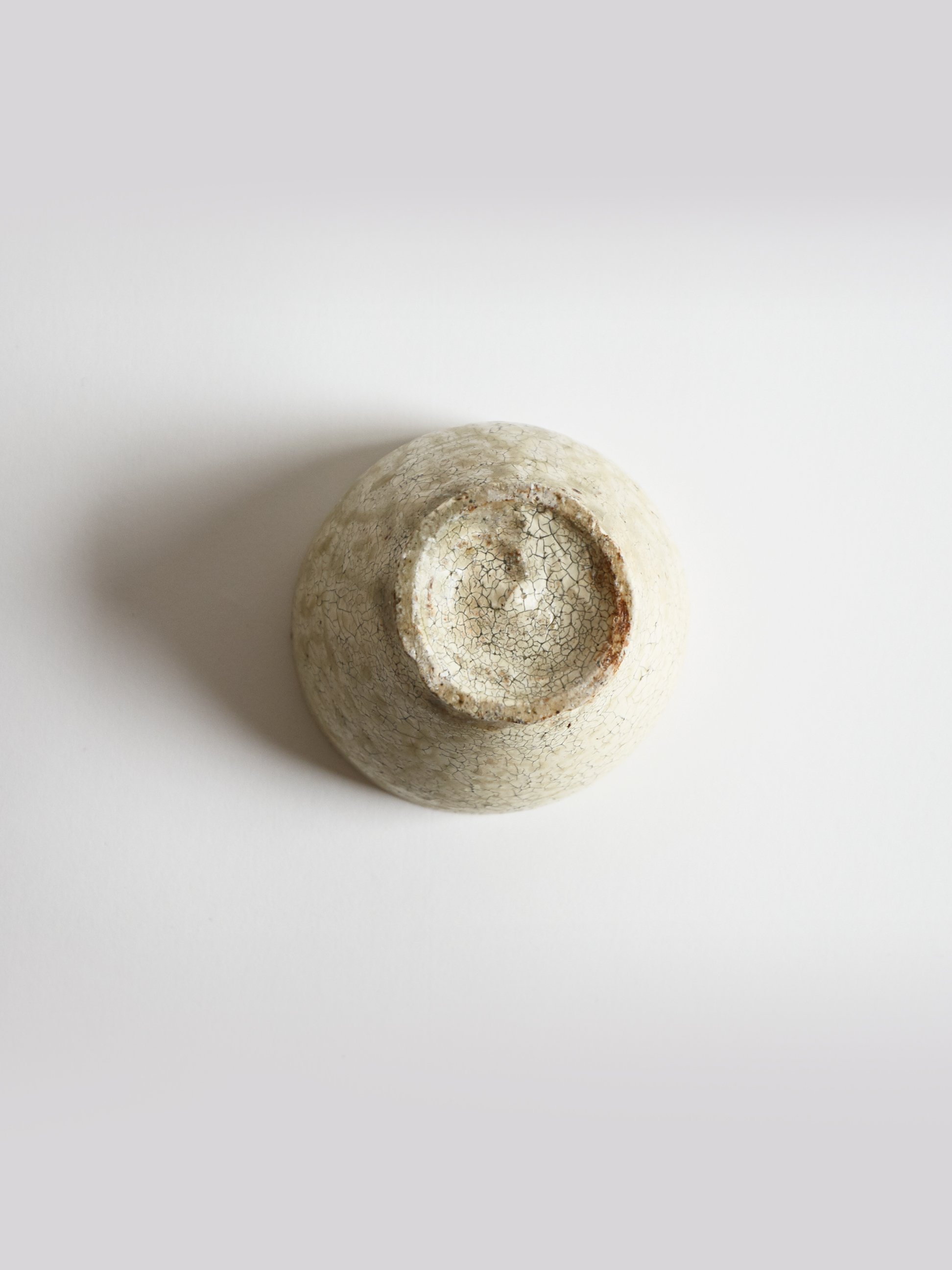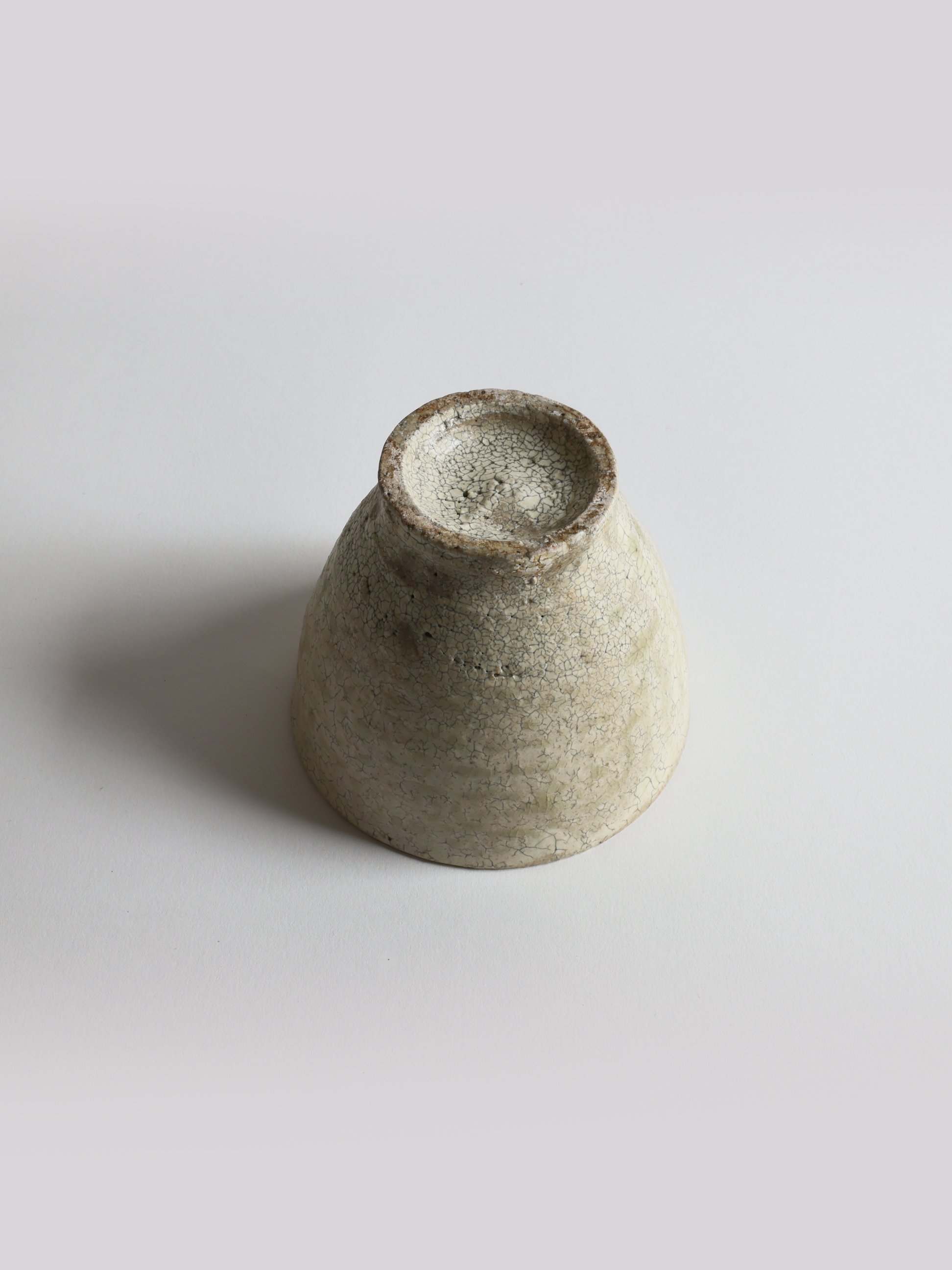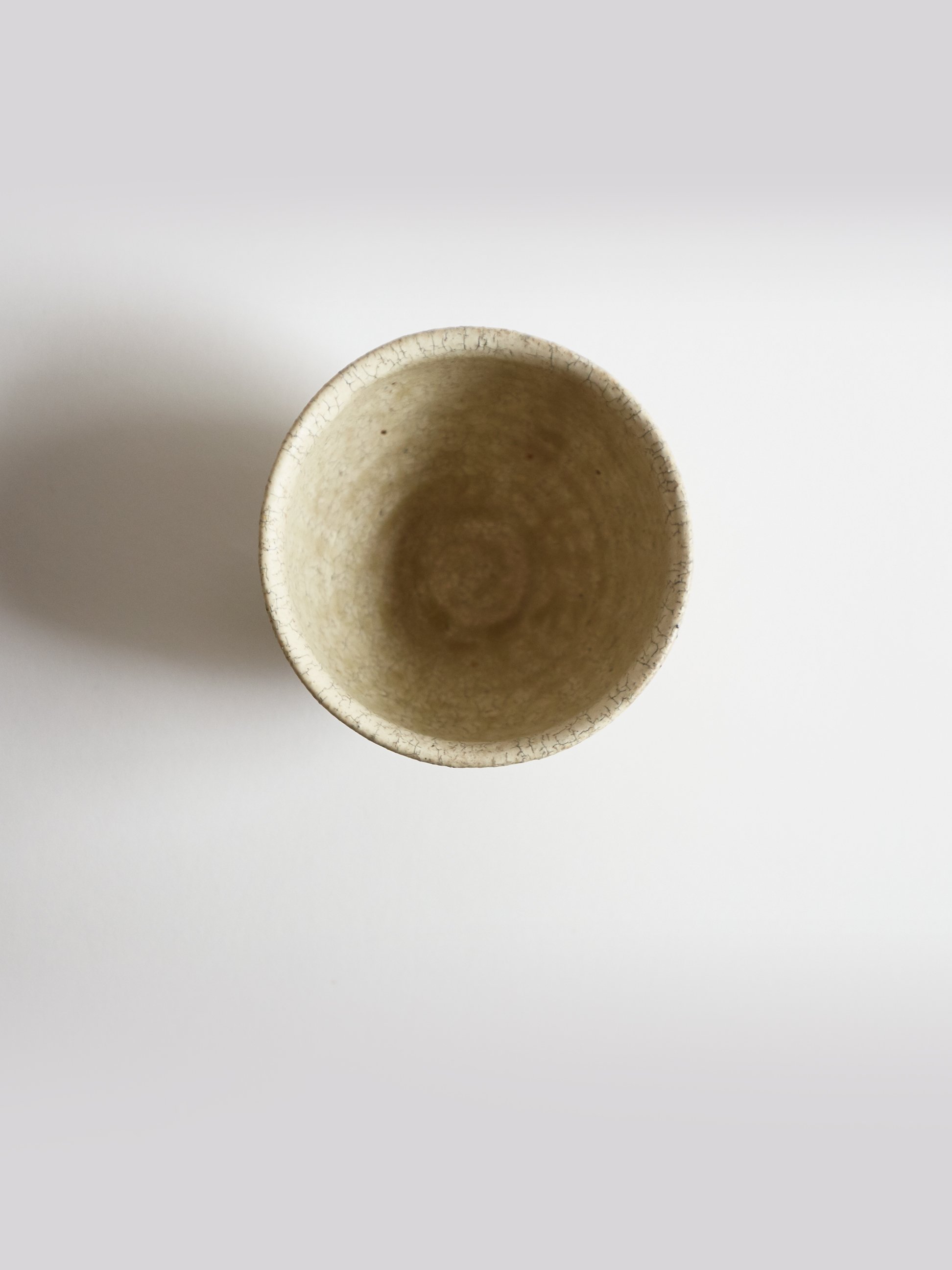 Image 1 of 4
Image 1 of 4

 Image 2 of 4
Image 2 of 4

 Image 3 of 4
Image 3 of 4

 Image 4 of 4
Image 4 of 4





Hibi Kohiki Small Yobachi
The Hibikohiki Small Yobachi Plate by Atsushi Ogata is a fine example of his mastery in utilizing the hibikohiki technique, where the unique characteristics of the clay emerge naturally during the firing process. This plate features subtle variations in color and texture, with the slight cracks and markings adding an organic feel to the piece. The earthy tones and natural finish enhance the plate’s tactile beauty, making it a statement piece that invites both use and admiration.
Handcrafted in Japan, the Hibikohiki Small Yobachi Plate is versatile for small dishes or as a decorative item. Each plate is one-of-a-kind, reflecting the unpredictable nature of the hibikohiki firing method. The result is a vessel that celebrates both the beauty of imperfection and the strength of traditional craftsmanship. With its raw, rustic aesthetic, this plate offers a connection to the heritage of Japanese pottery while fitting seamlessly into modern life.
Visit Product care page
6"D 2" H (152mmx500mm)
AO15
*These are all made by hand, so each one may differ from the photo and listed measurements.
The Hibikohiki Small Yobachi Plate by Atsushi Ogata is a fine example of his mastery in utilizing the hibikohiki technique, where the unique characteristics of the clay emerge naturally during the firing process. This plate features subtle variations in color and texture, with the slight cracks and markings adding an organic feel to the piece. The earthy tones and natural finish enhance the plate’s tactile beauty, making it a statement piece that invites both use and admiration.
Handcrafted in Japan, the Hibikohiki Small Yobachi Plate is versatile for small dishes or as a decorative item. Each plate is one-of-a-kind, reflecting the unpredictable nature of the hibikohiki firing method. The result is a vessel that celebrates both the beauty of imperfection and the strength of traditional craftsmanship. With its raw, rustic aesthetic, this plate offers a connection to the heritage of Japanese pottery while fitting seamlessly into modern life.
Visit Product care page
6"D 2" H (152mmx500mm)
AO15
*These are all made by hand, so each one may differ from the photo and listed measurements.
The Hibikohiki Small Yobachi Plate by Atsushi Ogata is a fine example of his mastery in utilizing the hibikohiki technique, where the unique characteristics of the clay emerge naturally during the firing process. This plate features subtle variations in color and texture, with the slight cracks and markings adding an organic feel to the piece. The earthy tones and natural finish enhance the plate’s tactile beauty, making it a statement piece that invites both use and admiration.
Handcrafted in Japan, the Hibikohiki Small Yobachi Plate is versatile for small dishes or as a decorative item. Each plate is one-of-a-kind, reflecting the unpredictable nature of the hibikohiki firing method. The result is a vessel that celebrates both the beauty of imperfection and the strength of traditional craftsmanship. With its raw, rustic aesthetic, this plate offers a connection to the heritage of Japanese pottery while fitting seamlessly into modern life.
Visit Product care page
6"D 2" H (152mmx500mm)
AO15
*These are all made by hand, so each one may differ from the photo and listed measurements.
Atsushi Ogata
Atsushi Ogata got a bit of a late start in the world of pottery, but is quickly making up for any lost time. Art was not an obvious or early choice for Ogata, who was born and raised in Tokyo. After college, he spent several years in the publishing world before being introduced to pottery by his wife, who he met while both were in college.
His wife left her job as a teacher to study pottery in Seto City, a famous city for ceramics and pottery, located in Japan’s Aichi Prefecture. When she graduated, Ogata quit his editor job and also studied pottery in Seto. After graduating, Ogata and his wife worked for another artisan, and they also began showing their pieces at a market in Seto City.
His style developed from decorative to simple as he grew — evolving to rough and masculine shapes. And it was just natural part of this process that his focus shifted to making art for everyday use around the home.
Ogata held a belief that unrefined clay shows the original characteristics of the ground it came from - the essential elemental character of the soil itself. As this philosophy developed and matured, he traveled to many areas of Japan to find the type of clay he liked most. Eventually, he and his wife settled in a remote part of the Nara countryside where he found the clay he really appreciated and built his kilns there. They still reside and maintain a studio in that Nara countryside.
Ogata wants people who use his pottery and who enjoy his work to feel the nature in each piece. His wish is to bring that nature to the dining table.
--------------------
Ogata says working with Makigama (wood fire kiln) takes lots of physical and mental strength, so he recently started to challenge the larger scale work when he can still manage. While he naturally has a laid back tone, there is some sense of urgency.
Although gas kiln is much easier to control the production, Ogata enjoys the unexpected results of Makigama process. Instability and inefficiency actually draws out the zest of clay, he says.
His style developed from decorative to simple over time — almost a refinement to a rough and masculine shapes. And it was just natural process that his priority shifted to ease of everyday use.
To learn more about featured artist's collection, please contact Japan Suite.
















